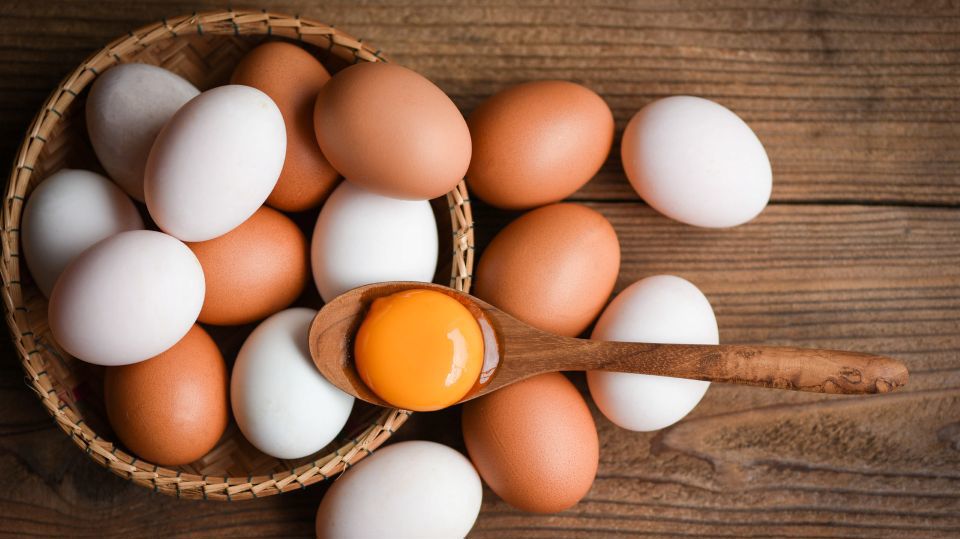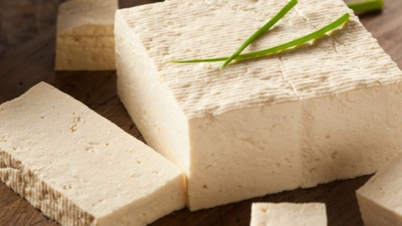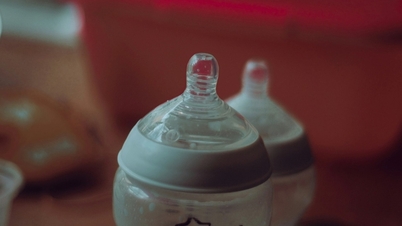Observe the eggshell
Fresh eggs have shiny, smooth shells and a clear, uniform color. Fresh egg shells do not have tiny cracks. You can also feel that the shell is quite hard and does not break easily.
Old eggs often have dull shells that may be rough or grainy. Old egg shells can become dull over time and sometimes show signs of deterioration such as cracks or mold. Old egg shells are also thinner and more fragile than fresh eggs.

Drop in water
One of the simple and effective ways to distinguish between fresh and old eggs is to drop the egg into water. Fresh eggs, when dropped into a bowl of water, will sink to the bottom and lie sideways or horizontally. Fresh eggs are quite heavy, so they sink to the bottom easily and do not wobble.
Old eggs will float or stand upright when placed in water. This is because over time, the air inside the eggshell will form a larger air pocket, making the egg float more easily.
Touch the eggshell
Pick up an egg and if it feels heavy and the shell is a bit rough, it is a fresh egg. On the contrary, if the egg feels light, smooth and slippery, it is an old egg.
Egg dance
Another interesting and simple tip is that you can try shaking the egg to check its freshness. Fresh eggs when shaken will not make any sound or only make a small sound because the egg yolk is intact and not disturbed.
If it is an old egg, when you shake it you will hear a rattling sound because the inside of the eggshell is dry, the egg yolk is no longer firm and the liquid inside has become diluted.
Candling eggs under light
When you hold a fresh egg up to the light, especially a strong light like an electric lamp or flashlight, you will see that the yolk and white are intact, without any cracks or blemishes. The yolk will be clear in color and located in the center of the egg.
When you hold an old egg up to the light, you will see that the space inside the egg is larger and you will easily notice the presence of air pockets. In addition, the yolk may be pushed to one side or broken, and the egg white may become cloudy or slimy, not as clear as a new egg.
Tips to distinguish between local chicken eggs and industrial chicken eggs
Local chicken eggs have a delicious taste and are rich in nutrients, so they are often sold at a higher price than industrially raised eggs. Therefore, many people have used acid to bleach industrial eggs to fake local chicken eggs. To avoid being fooled, you should carefully observe the external shape, industrial eggs are always larger and heavier than local chicken eggs.
Local chicken eggs are small in size, naturally yellow in color and sometimes dirty due to manual farming. Bleached chicken eggs have a pinkish-white shell, the shell seems to be covered with a layer of dust, too clean and not naturally shiny. Bleached industrial chicken eggs have a thin shell so they are more fragile and spoil faster. In particular, when processing, if you see that the egg white is not transparent but has turned white or is lumpy, you should throw it away because the egg may be contaminated with bleaching chemicals.
Notes when preserving eggs
- Do not leave eggs on the refrigerator door: Although the refrigerator always has a shelf for you to store eggs, leaving eggs on the refrigerator door is not good. Because the refrigerator door is always opened frequently, the temperature at the door is uneven, changing constantly, causing the eggs to spoil very quickly. Therefore, the best way is to wash the eggs, then put them in a carton and then store them in the refrigerator!
- Egg storage time: Eggs stored in the refrigerator should only be kept for 3-5 weeks. Eggs taken out of the refrigerator should be used within 2 hours, otherwise they will spoil.
Source: https://kinhtedothi.vn/cac-cach-phan-biet-trung-cu-hay-moi-cuc-don-gian.html



![[Photo] General Secretary To Lam visits Long Thanh International Airport Project](https://vphoto.vietnam.vn/thumb/1200x675/vietnam/resource/IMAGE/2025/11/13/1763008564398_vna-potal-tong-bi-thu-to-lam-tham-du-an-cang-hang-khong-quoc-te-long-thanh-8404600-1261-jpg.webp)

![[Photo] The "scars" of Da Nang's mountains and forests after storms and floods](https://vphoto.vietnam.vn/thumb/1200x675/vietnam/resource/IMAGE/2025/11/13/1762996564834_sl8-jpg.webp)




























































































![Dong Nai OCOP transition: [Article 3] Linking tourism with OCOP product consumption](https://vphoto.vietnam.vn/thumb/402x226/vietnam/resource/IMAGE/2025/11/10/1762739199309_1324-2740-7_n-162543_981.jpeg)







Comment (0)